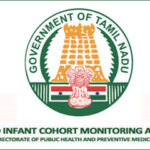Dr. Muthulakshmi Reddy Maternity Benefit Scheme Tamil Nadu
The Maternity scheme was launched in 1987 and is known as the Dr. Muthulakshmi Reddy Maternity Benefit Scheme. Under this useful scheme, the Tamil Nadu state government provides financial help to poor pregnant women during maternity.
Financial help is provided for pregnant women over 19 years of age and only for the 1st 2 pregnancies. The Muthulakshmi Reddy Maternity Benefit Scheme provides a total of Rs.18000/- (Eighteen Thousand Rupees) in a total of 7 installments.
The eligibility criteria for receiving benefits include antenatal registration in the 1st trimester, completion of the 3rd month, availing of nutritional kits, and completion of essential vaccines for the baby at the appropriate time.
Under the MRMBS scheme, the Tamil Nadu government provides a nutritional kit that consists of
- Mother’s Health Mix
- Iron Syrup
- Protein Biscuits
- Dates
- Aavin Ghee
- Albendazole Tablets
- Towel
Although several health-related schemes including National Rural Health Scheme, Tamil Nadu Health System Project, Tamil Nadu Medical Service Corporation, etc are in place, the MRMBS has been successful in bringing about the change in the desired target regarding maternal and infant mortality rates.
Muthulakshmi Maternity Scheme Details:
| Department Name: | Health & Family Welfare Department, TN |
| Scheme Name: | Dr. Muthulakshmi Reddy Maternity Benefit Scheme |
| State: | Tamil Nadu |
| Website: | https://www.tn.gov.in |
| Application Status: | Open |
| Allowance: | Rs.18,000/- (Eighteen Thousand) |
| Contact Place: | All Village Health Nurse / Urban Health Nurse and Primary Health Centres / Urban Primary Health Centres. |
Dr. Muthulakshmi Maternity Scheme Installments:
Eligibility Criteria:
- The pregnant women must have completed 19 years of age.
- The eligible pregnant women may receive all five installments for the first 2 deliveries only.
- HOB & Migrant women will receive first and fifth installments on certain conditions.
Beneficiary:
Poor pregnant mothers.
Scheme Benefits:
Financial help to poor pregnant women.
How to Obtain the Maternity Benefit Scheme?
The Pregnant woman has to register the application form of her pregnancy before Twelve (12) weeks with the Village Health Nurse / Urban Health Nurse (VHN/UHN).
Nutrition Kit:

Why This Kind of Scheme is Important in India:
Muthu Lakshmi Reddy Maternity Benefit Scheme was implemented to achieve 100% institutional deliveries in Tamil Nadu in order to minimize the complications related to pregnancy and childbirth.
The scheme provides cash assistance in various installments when the pregnant mother fulfills the criteria to satisfy adequate antenatal care.
The development of a nation is dependent on several factors of which health is a predominant one.
This is indirectly reflected in the health status of the vulnerable groups, especially mother and child health.
The increasing prevalence of maternal deaths and infant deaths in poor and underdeveloped countries is good evidence to show that healthcare availability and accessibility (Universal health coverage) is key to nation-building.
There have been several government schemes applications introduced both at the center and at the state level for enhancing maternal health and improving institutional deliveries.
In addition, the placement of adequate human resources to tackle health care issues by way of training the midwives and ANMs and also strengthening the referral system has gone a long way in the reduction of maternal mortality rates.
Although India has made considerable progress in improving the overall health status, the complications of pregnancies and childbirth are still persistent and result in disability among women of reproductive age.
Several factors like malnutrition, poverty, illiteracy, and unhygienic living conditions complemented by infections, unregulated fertility, and lack of awareness are responsible for these complications.
Therefore in order to prioritize maternal health, it is important to establish infrastructure to support the same and in addition, there is a need to create awareness by building a knowledge base among people regarding the importance of the same.
Studies have shown that the lack of institutional deliveries has been the key reason for such maternal and child-related complications. Envisaging the complications involved in-home deliveries, the government of Tamil Nadu implemented a modest childbirth assistant scheme named after Dr. Muthu Lakshmi Reddy, Tamil Nadu’s first woman doctor and social activist.
To know more visit the TN government’s official website: krishnagiri.nic.in













 Previous Post
Previous Post Next Post
Next Post